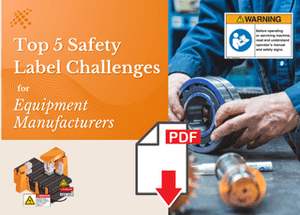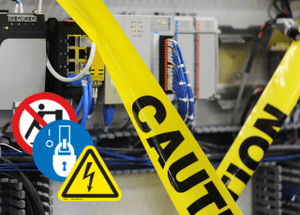OSHA Regulations vs. ANSI Safety Sign Standards: What You Should Know
|
|
OSHA Regulations vs. ANSI Safety Sign Standards: What You Should Know |
Is "Safety First" the most important aspect of all as a business owner? The "ayes" outweigh the "nays." Having the right safety signs visible in key locations can help to ensure that it's not just a mere slogan, but a true workplace way of life.
One of the best ways to go about that is by including all the key components that your signage needs to feature to achieve compliance as well as the latest best practices. Two organizations make this a bit easier: the Occupational Safety and Health Administration (OSHA) and the American National Standards Institute (ANSI).
The Evolution of Safety Sign Design
Part of the
challenge of remaining on the cutting-edge of signage best practices is that
the “cutting edge” is always changing – yet many of the
best practices
associated with safety signage
have remained static for decades. Simple, declarative
words and visual representations of hazards, combined with vivid colors like
reds, yellows and greens stretch all the way back to the Universal Safety
Standards of 1914 and formed the basis for what would become the ASA Z35.1 Standard.
Developed by the American Standards Association – which would later become ANSI – the standard set out to designate specific design features that would govern the safety industry for years to come. These standards were so widely accepted that they impacted later OSHA regulations: in 1971, OSHA used ASA Z35.1 as the foundation for its 29 CFR 1910 safety sign classifications.
Over the years, even this relatively sophisticated signage standard proved insufficient. With the noted increase in immigrant and non-English speaking workers on industrial worksites, ANSI continued to review safety standards and update guidance. This ultimately resulted in the ANSI Z535 safety sign standards, a continuously improved and refined safety standard that offers guidance on the most effective means of visually communicating warnings and environmental hazards.
Regulations Vs. Standards
Even with
all that history, many organizations may struggle to understand the difference
between OSHA regulations and ANSI sign standards in practice – or worse, not
realize their safety signage is non-compliant. A critical difference boils down
to
enforceable regulations versus voluntary standards.
Here's the basic takeaway of what you need to know: OSHA is a government entity charged with detailing and enforcing safety standards. As such, failure to comply with an OSHA regulation could result in steep penalties.
ANSI, on the other hand, operates in an independent capacity and lacks the enforcement aspect to dictate the use of its suggested practices. This is a double-edged sword: without being subject to regulatory oversight, it can continuously improve its standards and factor in the latest best practices on a rolling basis. Yet without the rule of law to enforce it, organizations can disregard its guidance.
A Universal Safety Standard
Well, at
least that’s how it
used to be. With
OSHA’s adoption of the latest ANSI Z535 standards in 2013, ANSI sign best
practices are now accepted in the U.S. and around the world – even as many
continue to use older, more traditional OSHA safety sign designs domestically.
OSHA signage tends to be simpler, relying on large block lettering and bold
words like “DANGER.” ANSI sign standards are more detailed than OSHA's,
featuring symbols and graphic descriptions to better portray specific risks as
well as more detailed descriptions of the danger.
The bottom-line? While OSHA-approved safety signage remains the only way to have a compliant worksite, the incorporation of ANSI standards has pushed the industry towards a more universal safety standard. The two standards coexist together, allowing companies to balance compliance and hazard communication.
At Clarion, we specialize in helping companies achieve this balance with our unique approach to safety communication. When you’re looking for ANSI Z535-style safety signs for consistency and clarity or OSHA signage to ensure compliance, we can provide solutions that suit your needs.
If your organization uses OSHA-style signs but is interested in updating to ANSI designs, we’re here to help. For nearly every OSHA-style sign in our catalog, we offer a best practice ANSI recommendation. Our compliance experts can also evaluate your signs – on an individual sign basis or looking at all signs throughout your workplace – ensuring effective communication using the latest best practices, as well as reducing visual clutter and supporting your organization's big picture safety and risk objectives. Learn more about our safety sign assessments .




